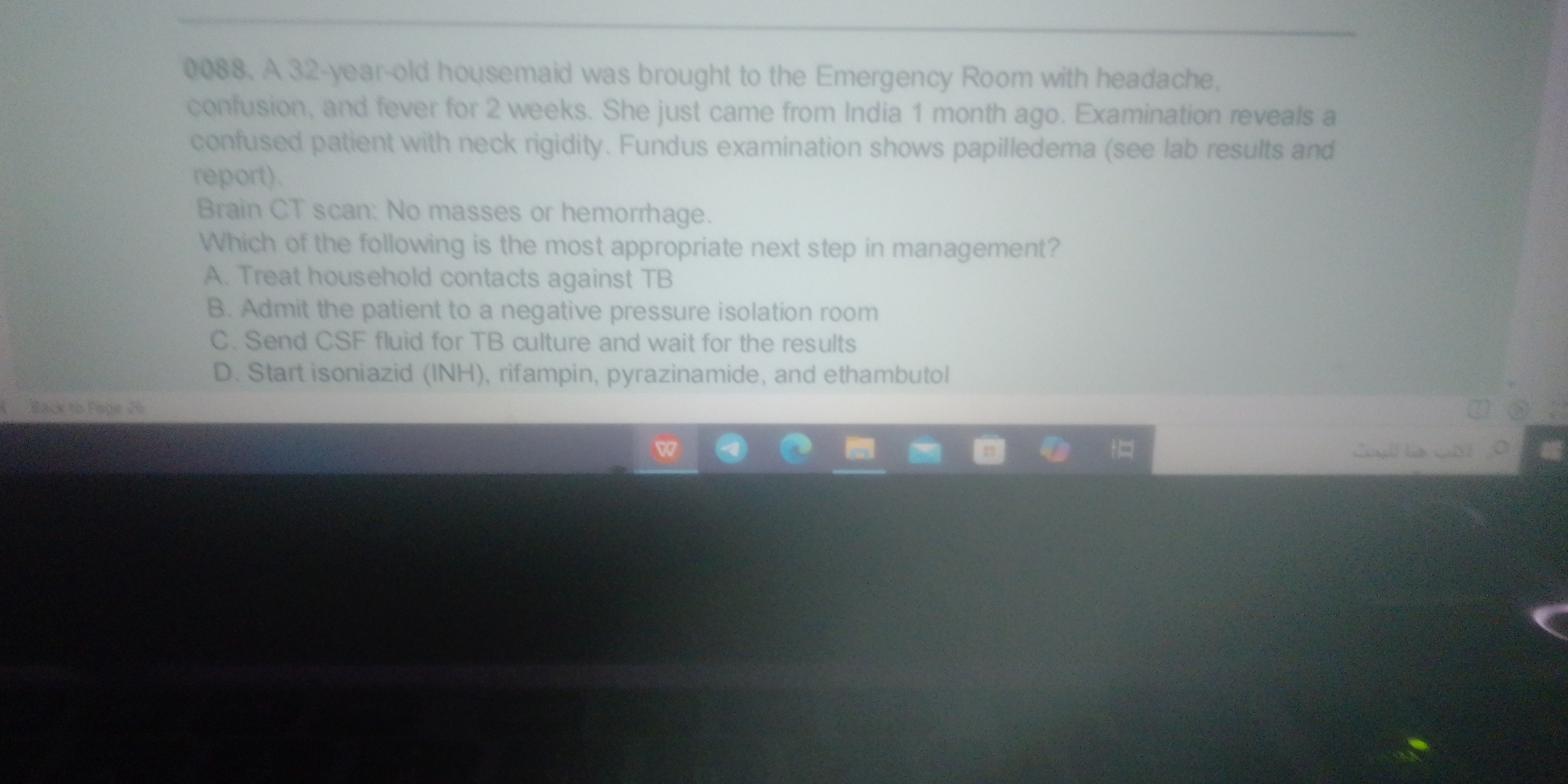A 32-year-old housemaid was brought to the Emergency Room with headache, confusion, and fever for 2 weeks. She just came from India 1 month ago. Examination reveals a confused pati... A 32-year-old housemaid was brought to the Emergency Room with headache, confusion, and fever for 2 weeks. She just came from India 1 month ago. Examination reveals a confused patient with neck rigidity. Fundus examination shows papilledema. Which of the following is the most appropriate next step in management? A. Treat household contacts against TB B. Admit the patient to a negative pressure isolation room C. Send CSF fluid for TB culture and wait for the results D. Start isoniazid (INH), rifampin, pyrazinamide, and ethambutol

Understand the Problem
The question describes a patient's clinical scenario and asks which management step is most appropriate given the patient's symptoms and history. It covers aspects of clinical decision-making in a medical context.
Answer
Start isoniazid (INH), rifampin, pyrazinamide, and ethambutol.
The most appropriate next step is to start isoniazid (INH), rifampin, pyrazinamide, and ethambutol.
Answer for screen readers
The most appropriate next step is to start isoniazid (INH), rifampin, pyrazinamide, and ethambutol.
More Information
Given the clinical presentation and high suspicion of tuberculous meningitis, immediate initiation of anti-tubercular therapy is critical, even before cultural confirmation, due to the potential severity of the condition.
Tips
A common mistake is delaying treatment to wait for culture results. In suspected TB meningitis, immediate treatment is crucial.
AI-generated content may contain errors. Please verify critical information